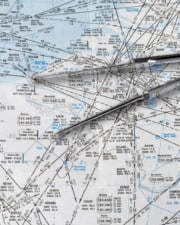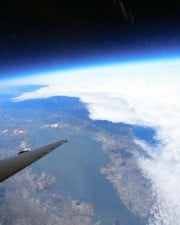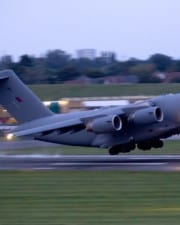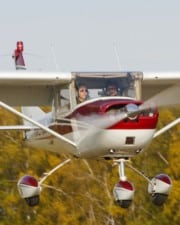Airplanes have three main types of control surfaces that allow the pilot to control them as they fly through the air. The elevator allows the pilot to, as they say in the movies, “Pull up!”
Table of Contents
How Does the Elevator on a Plane Work?
The elevator is a horizontal control surface, usually located on the tail section, that controls the plane’s pitch. Pitch is the motion airplanes make when they move their nose up or down. When a pilot “pulls back” or “pulls up” on the yoke, the elevator moves and makes the nose go up.
Types of Flight Control Surfaces and Their Purposes
On a modern jet airliner, there are tons of flight controls working to control and stabilize the plane. But the airliner, just like the lowly Cessna, has just three primary flight controls–the elevator, the ailerons, and the rudder.
Each type of control controls the airplane’s motion around one of the three axes of flight. The motion the plane makes also has a specific term.
The elevator moves the airplane around the lateral axis (wingtip to wingtip), which is called pitch.
The ailerons move the airplane around the longitudinal axis (nose to tail) called roll.
And finally, the rudder controls the plane around the vertical axis (up and down), which is called yaw.
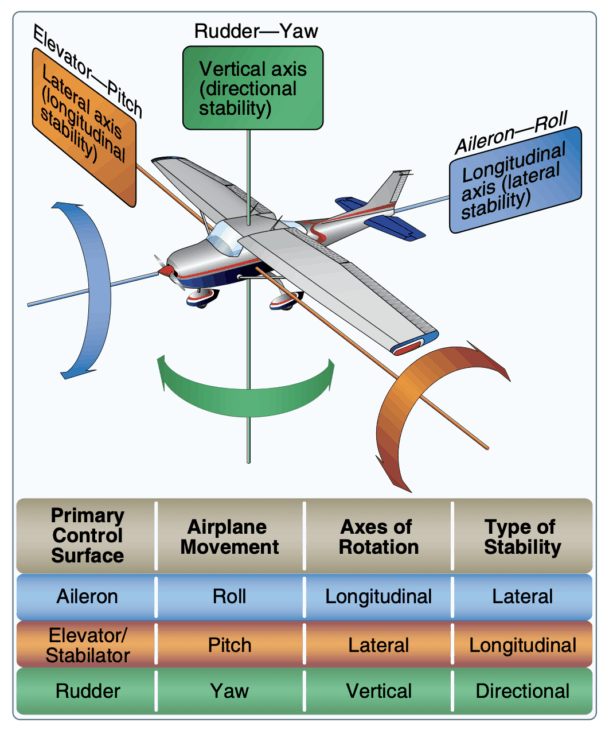
Secondary flight controls serve other purposes besides controlling the airplane. They may help the wing produce more lift at low speeds as flaps do. Some reduce lift to help the airplane slow down, like spoilers. And some relieve the pilot from holding the controls in place for the entire flight like trim tabs do.
How Does the Elevator on a Plane Work?
All flight controls use the same basic principles of lift that the wings do. When the pilot moves the controls, they make a lifting force either up or down.
Usually, the elevator is mounted on the very back of the plane on the empennage. The empennage is the area of the plane that most people call the tail, which includes the vertical and horizontal stabilizers.
On most planes, the elevator is attached to the trailing edge of the horizontal stabilizer. Sometimes the entire stabilizer surface moves, but most of the time, it’s just the back half.
When the pilot pulls back on the control column, the elevator moves up. This creates a wing-like curve on the surface that pulls the tail down. By moving the tail down, the nose of the airplane goes up.
When the pilot pushes forward on the controls, the elevator points down. The opposite happens, and lift is made that pulls the tail up. Pulling the tail up makes the nose of the plane go down.
Elevator Trim Tabs
If you look closely at the horizontal stabilizer on most planes, you’ll see three parts. There is a fixed horizontal stabilizer, which helps the plane maintain straight and level flight. There’s the elevator that moves with the yoke, making the plane’s nose go up or down. And attached to that, there is what looks like another tiny elevator.
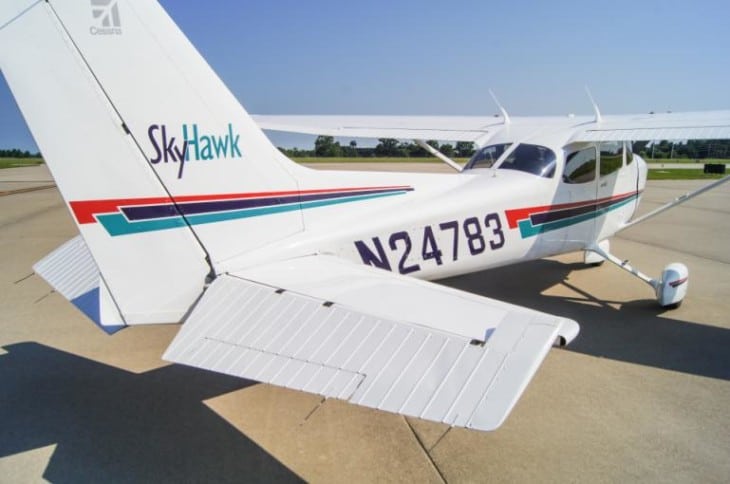
This small elevator trim tab is a secondary flight control. It moves when the pilot turns a wheel in the cockpit, and it produces a little bit of lifting force that moves the elevator it is attached to.
The amount of elevator force is always changing during flight. When the pilot commands a climb, they put in full power and pitch the nose up a little bit. The plane is designed to fly straight and level, so the pilot has to keep pulling the yoke back to keep the nose up.
On most planes, the flight controls move easily and with little effort. But holding them in one position for long periods of time gets old fast. The trim tab allows the pilot to stabilize the controls so that they don’t have to hold them in place constantly.

To operate a trim tab, the pilot gets the plane flying and stabilized in the configuration that they desire. When they’re ready, they then move the trim tab enough to relieve the pressure that they need to hold on the control.
Other Elevator Designs
The elevator has been played with and moved around since the first flights. The elevator on the Wright Flyer was mounted on the front of the plane. This is still used in some aircraft, like the Beechcraft Starship or the Rutan Long-EZ. When mounted in this way, it is called a canard.
Some airplanes, notably Piper aircraft, use a combination horizontal stabilizer and elevator. The entire surface moves. This configuration is known as a stabilator. Stabilators are a fairly common design feature found on a few airliners and military aircraft like the F-16.
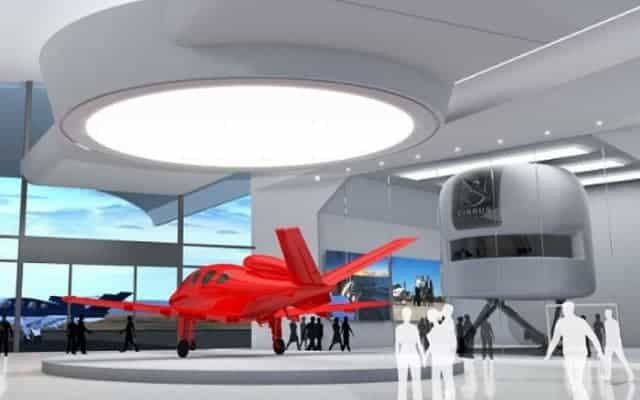
Finally, there are aircraft that use a V-tail configuration, like the Cirrus Vision Jet or older Beechcraft Bonanzas. These planes combine the rudder and elevator into two flight control surfaces called ruddervators. Each ruddervator moves for pitch and yaw control commanded by the pilot.
Related Posts


